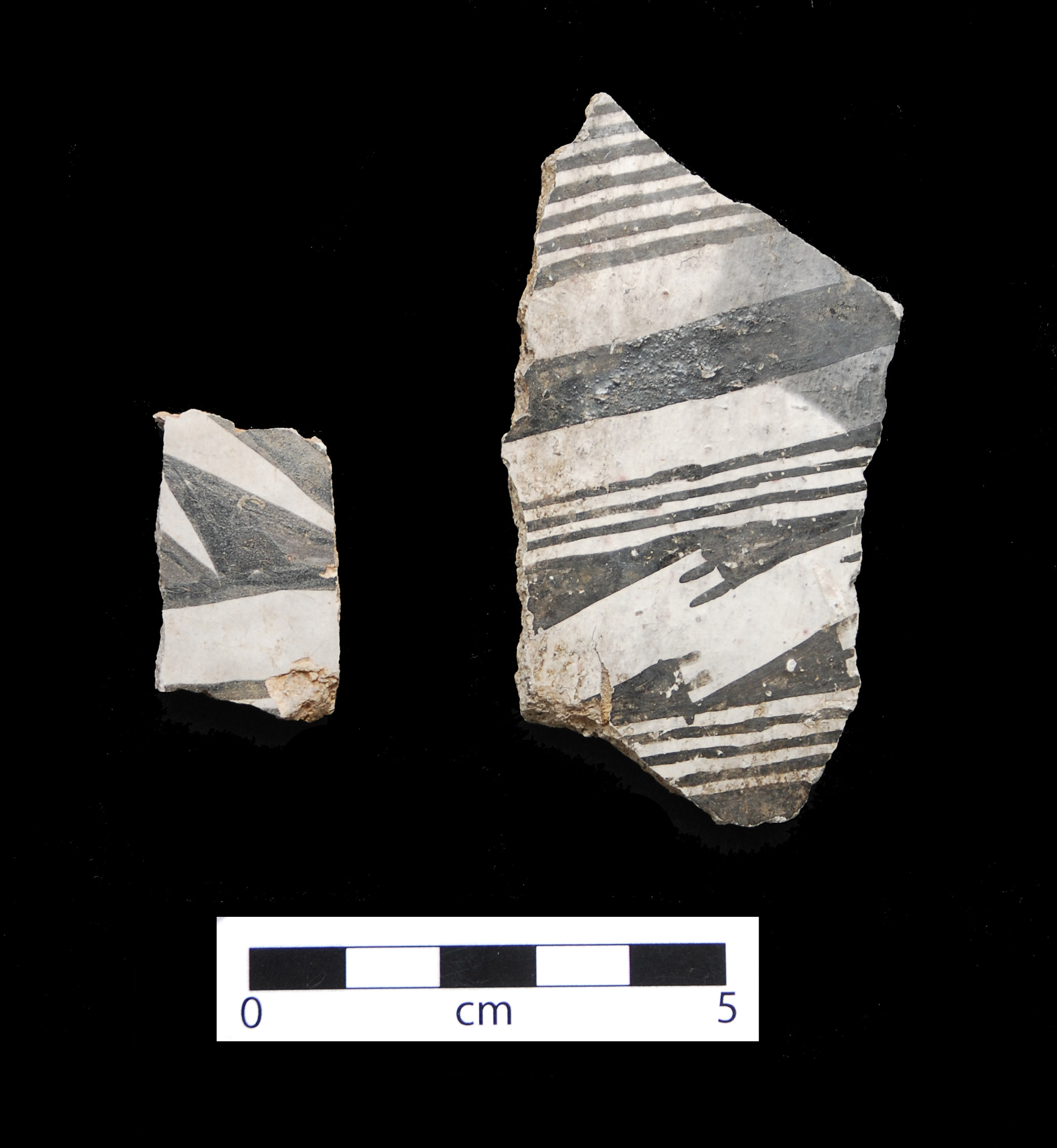Pinedale Black-on-white is a late type with a more limited distribution that other Cibola White Ware types.
Archaeological Culture: Ancestral Puebloan
Date Range: ca. A.D. 1300-1325.
Construction: By coiling.
Firing: In a neutral to reducing atmosphere.
Core Color: White to light gray.
Carbon Streak: Occasional.
Temper: Sherd and sparse sand.
Surface Finish: Shiny white slip; often thick, hard, crackled, and finely polished.
Surface Color: White.
Forms: Bowls, jars, pitchers, canteens, ladles, effigies.
Decoration:
- Paint: Subglaze to glaze; black to greenish black.
- Pigments: Mineral.
- Design: Mostly solid designs with interlocking elements; solid steps, step frets, and corbelling lines; hatching frequently changes direction within larger motif; elements so closely spaced that designs appear negative.
Comparisons: Distinguished from Tularosa Black-on-white by slip and glaze, as well as the absence of Tularosa-style hatching. Designs are similar to Kayenta Black-on-white, which has carbon-based paint.
Compiled from the following sources:
Kintigh, Keith, Greg Schachner, and Josh Watts. (2003) El Morro Valley Prehistory Project Ceramic Guide (link opens in new window), Arizona State University, Tempe.
Compiled by:
Meghann M. Vance, Northern Arizona University Anthropology Laboratories.

